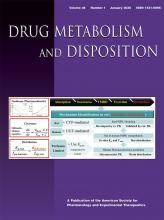Abstract
Generating accurate in vitro data is crucial for in vitro to in vivo extrapolation and pharmacokinetic predictions. The use of human embryonic kidney (HEK) 293 cells overexpressing organic anion transporting polypeptide (OATP) 1B1 and OATP1B3 in protein-free buffer and 100% human plasma incubations was explored for the uptake of four OATP substrates: pravastatin, rosuvastatin, repaglinide, and pitavastatin. Differences were observed for each parameter [unbound Michaelis constant (Km,u), Vmax, intrinsic clearance (CLint), and unbound passive diffusion Pdif,u] obtained from the buffer and plasma incubations in both cells, and the fold differences were greatest for the highly protein bound compounds. The fold change in Km,u values ranged from 1.91 to 619, and the fold change in Vmax values ranged from 1.22 to 97.4. As a result, in both cells, the CLint values generated in the plasma incubations were higher by 0.762- to 31.7-fold than the values generated in the protein-free buffer. The passive diffusion was also higher in the plasma incubations for all four compounds, with a fold difference range of 1.73–23.4. These shifts in the presence and absence of human plasma suggest that plasma proteins may play a role in both the active uptake and passive diffusion processes. The results also support the idea of a transporter-induced protein-binding shift, where high protein binding may not limit the uptake of compounds that have high affinity for transporters. The addition of plasma to incubations leading to higher CLint values for transporter substrates helps mitigate the underprediction commonly noted with in vitro to in vivo extrapolation.
SIGNIFICANCE STATEMENT The current investigation brings a new perspective on how to mitigate the underprediction commonly noted with in vitro to in vivo extrapolation for OATP substrates by using HEK293 cells overexpressing OATP1B1 and OATP1B3. It also supports the idea of a transporter-induced protein-binding shift, where high protein binding may not limit the uptake of compounds that have high affinity for transporters.
Footnotes
- Received August 1, 2019.
- Accepted October 28, 2019.
- Copyright © 2019 by The American Society for Pharmacology and Experimental Therapeutics






